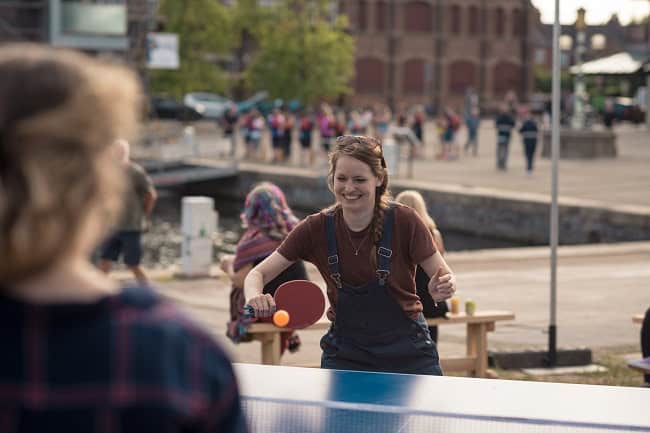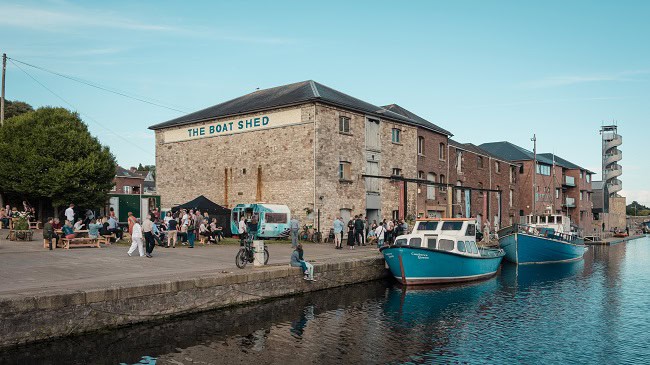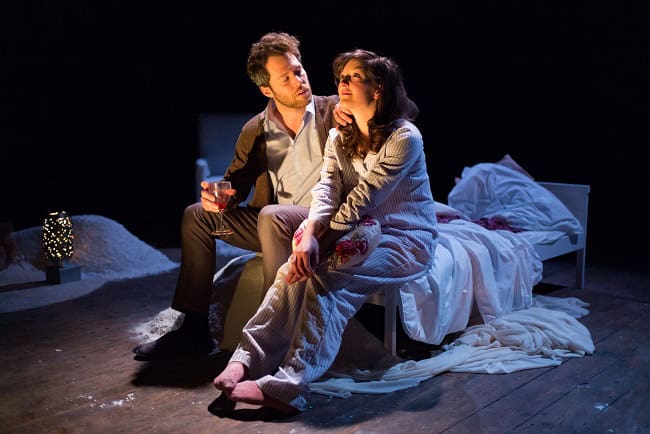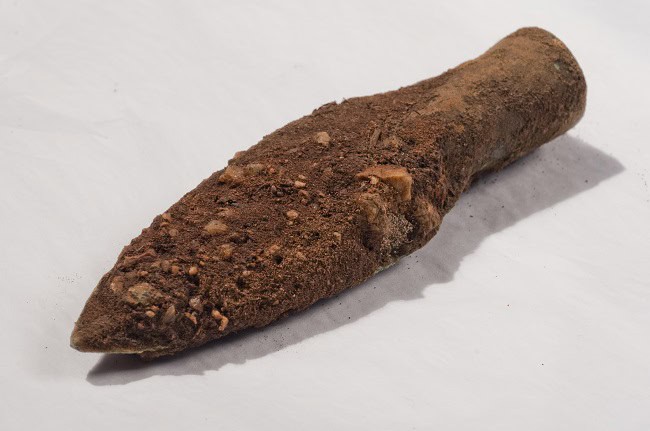From how we grow our food, to how we look after older people, the crowdfunding community is reimagining the world we want to live in – and raising the money to make it happen. Having ripped up the fundraising rulebook, the UK’s biggest crowdfunding platform has now set its sights on making public money and grant funds become more effective too
“The innovation of our project owners and their new solutions to solving problems is amazing,” says Phil Geraghty, managing director of Crowdfunder.
Since 2013, the Cornwall-based organisation has worked with more than 80,000 crowdfunding projects, raising raising over £40m for groups and organisations working for social good. With the crowdfunding concept firmly established in the public consciousness as a way to get great ideas off the ground – especially those that benefit the community – crowdfunding could be a way to make public money more accessible and effective too.
“The bottom line is that we want to do more,” says Geraghty. “More projects, more supporters, more partner funds and more ideas happening.”
Crowdfunder is now poised to shake up the grants sector, and is currently running its own crowdfunding campaign to help make this happen.
Some £5.6bn of grants are given out in the UK each year, but the way the cash is distributed is changing fast. By combining smaller donations raised from the public with larger, institutional funding, ‘matched funding’ could be a way for society to collaborate and bring about positive change. National and local government, trusts and foundations, businesses, universities and schools have already tried it – awarding funds to crowdfunding projects that match the amounts being raised from their supporters.
This is ‘disruption’ but not in the bullish vein of the likes of Uber and other tech giants. Geraghty is keen to note that this is about working toward clear common aims to make ideas happen. “It’s collaborative disruption,” he says, “where everyone wins. We think that working in this way will allow us to get more funds to the projects that need it, faster.”
It’s collaborative disruption, where everyone wins
This year, Crowdfunder has been working with the government, Heritage Lottery Fund, Arts Council England and Nesta to produce Matching the Crowd: the Matched Crowdfunding Report 2017. Released this month the research indicates that matched crowdfunding has remained largely unexplored so far but could have a huge impact.
“The research marks an important moment in the history of crowdfunding,” says Geraghty. “This report suggests that if grant money was distributed via crowdfunding, its impact could be significantly amplified, both in terms of unlocking additional funds and building skills and non-financial support from the community.
“The opportunity is huge and Crowdfunder is perfectly primed to disrupt (in a friendly and collaborative way of course!) the grant-giving sector with a collaborative approach and a shared mission to make great ideas happen.”
The report delves into a nine-month pilot project in which £251,500 in matched funding was provided by Arts Council England and Heritage Lottery Fund to 59 arts and heritage-related projects on Crowdfunder.co.uk. Projects, from immersive opera in south London, to the restoration of one of the UK’s most important historic ships, also received support, coaching and workshops from the Crowdfunder team, alongside the support of a crowd of 4,970 backers.
Hasan Bakhshi, executive director of creative economy and data analytics at Nesta, agrees that matched funding is a way to do more with public money. “Nesta has been tracking the crowdfunding sector since 2010, including the growing involvement of institutional funders. This pilot programme has given us unique quantitative evidence that arts and heritage funders can make public money work harder by matched funding.”
Unlocking new support
How does it help? The pilot suggests that matched funding makes projects more likely to succeed and boosts donation size: the average public donation to arts projects increased from £63 to £74 when backed by match funding. It is a way to inject arts and heritage projects with fresh finance too: the pilot largely attracted new supporters, rather than simply drawing from existing philanthropic sources. Some 86 per cent of project backers had never supported the organisations they backed before and a fifth hadn’t supported this kind of project in the past.
And it could be a way to diversify the types of projects that are funded by the likes of Arts Council England, rather than the ‘usual candidates’. Some 42 per cent of successful project owners in the pilot had never applied for funding from either Arts Council England or Heritage Lottery Fund before.
The non-financial impacts of matched crowdfunding are exciting too: 85 per cent of fundraisers reported receiving non-financial contributions from ‘the crowd’ as well as money. And 62 per cent of fundraisers reported feeling more confident and inspired following the experience.

Crowdfunding helped make The Boat Shed, a creative venue in Exeter, a reality. Image: Ben Borely
The Opera Story set up a crowdfunding campaign to help finance their first show, Snow, eventually raising £7,405 from 78 supporters, including a £1,250 match from Arts Council England, far exceeding their original £5,000 target. “Crowdfunding is enjoyable for the audience,” said Manuel Fajardo, The Opera Story’s co-founder and executive director.
“They are able to connect with the project, feel a part of it, and know that they have helped to make this happen. Importantly, a successful crowdfund can be used to show that there is support for your project and may encourage other funders to get involved. Especially in our case because we managed to exceed our target by nearly £2,500. That gave us a great story we could tell to people and we are sure it motivated some other funders to back us.”
We know that when the crowd comes together, great things can happen
Now, Crowdfunder wants to develop the funds and technology to work with more grassroots projects. The team is raising funds on Crowdcube to scale the business, tap into the grant sector and help more charity, community and business projects across the UK. Geraghty says: “Our last fundraise enabled us to grow from a small team of nine people into a dynamic group of 30, which has allowed us to work with over 40,000 more projects and reach an incredible 600,000 members.
“However, the grant market alone is worth over £5 billion and we’ve only just scratched the surface of what we could go on to achieve. We are now currently getting up to 200 projects a day coming to our platform, which ultimately means that the demand for our services is continuing to grow. We realise that we need to grow at the same pace. We want to fundraise this time around to further develop our tech and our team so that we can continue empowering people to turn their ideas into reality.
“We are delighted to already have more than 1,000 shareholders and we want more people to join us on our journey. As a crowdfunding platform, we are very proud to be owned by the crowd – we know that when the crowd comes together, great things can happen.”
3 matches made in heaven
1. The Boat Shed Pop Up

Image: Ben Borely
Over 16 weeks during this summer, the old maritime museum in Exeter sprung into life with The Boat Shed Pop Up. The project sought to transform two derelict warehouses on Exeter’s quayside into a new creative venue for the city, including filling the warehouses with theatre, visual art, live music, comedy, cocktails and a mini golf course inspired by the stories and heritage of Exeter and designed by local artist Fi Russell.
It wouldn’t have happened without crowdfunding. In March, The Bike Shed Theatre successfully raised £30,605 of an initial £25,000 target – including a £12,500 match from Arts Council England – from 469 supporters in 28 days to develop the project.
Deputy director Kelly Johnson said: “Part of the reason we did The Boat Shed Pop Up is to test if people actually want it to happen. Do people want a new creative space in this part of Exeter? Are people excited about lots of theatre companies and comedians coming to this city? Is a mini golf course in a theatre a crazy idea or a good one?
“The Crowdfunder campaign was the first test of our ideas. Thankfully the response indicated that people did indeed want these things to happen.”
2. The Opera Story: Snow

Image: Nick Rutter
The Opera Story is a new company specialising in commissioning new opera from young composers. Their mission? To make the beauty and richness of opera as accessible as possible. They set up a crowdfunding campaign to help finance their first show, Snow. In December 2016, the team successfully raised £7,405 from 78 supporters, including a £1,250 match from Arts Council England, exceeding their original £5,000 target. Snow was made a reality with shows in London in February and March this year.
“Crowdfunding is a fantastic way to reach out to find out who believes in your project and to generate ownership of artistic projects from their earlier stages. Snow is The Opera Story’s first production, so we wanted to make sure we had that support to get the project off the ground,” said Manuel Fajardo, The Opera Story’s co-founder and executive director.
3. Coll Hoard Conservation

Image: Aaron Watson © Kilmartin Museum Company Ltd
In 2015, local metal-detecting enthusiast Kenny Macintyre was out and about on the RSPB Scotland reserve at Breachacha, Isle of Coll, when he came across a metal object, different from the bits of scrap metal he usually found.
He contacted the Treasure Trove Unit in Edinburgh who confirmed he had discovered a Bronze Age spearhead, dating from between 1,000 to 800 B.C. Knowing that items like this are normally found in hoards, and being aware of the historical value of such a collection, the Treasure Trove Unit decided to excavate further. Their hunch proved correct and, with help from Kenny and other archaeologists, a total of 13 items were discovered at the site.
Through the Treasure Trove process, these exciting artefacts were awarded to Kilmartin Museum in Mid Argyll. In order to prevent active bronze disease and further damage to the objects, they set up a crowdfunding campaign to get the metalwork conserved. With backing from 48 supporters, including a match funding grant of £5,000 from the Heritage Lottery Fund, the museum raised £10,930 of a £10,000 target in 32 days.
“The project we decided to crowdfund for was fairly time sensitive, as the artefacts needed to be conserved sooner rather than later. Crowdfunding seemed to be a good way of raising funds to a deadline,” said Anne Smart from Kilmartin Museum.
Beyond the money: matched crowdfunding in numbers







